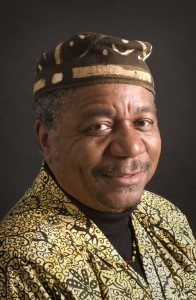by Eugene B. Redmond, February 23, 2011 . . . Re: 150th Birthday Celebration, April 1.
1. we arrive, we arrive
we cross-fertilize
we derive, we survive
2. For a thousand years, Native Peoples (“mounds” builders) inhabit both sides of the Mississippi River. In “Illinois,” these “Mississippians” build the largest city in “America” (circa 1250 AD)—with a population exceeding that of London at the time. (Fast Forward: “Native” culture survives/pervades Metro East today via mounds, namesakes (sports teams, rivers, streets) museums (lectures/tours), conferences and annual pow wows.)
3. 1600-1800: After French Jesuits settle in “Cahokia” (late 1600’s), other Europeans follow, including Captain James Piggott, who operates the first Mississippi River ferry business (1790’s). A few hundred Africans are among settlers. (Fast Forward: During the 20th Century, ESL’s “Piggott” Avenue nurtures Scotia Calhoun Thomas (entrepreneur), James Rosser (college president) and Jackie Joyner-Kersee, among others.)
4. 1800-1860: Flood of Immigrants. Belleville incorporates as a city (1850). ESL, evolving through name changes, social and economic processes, is overwhelmed by flooding and a tornado at mid- and late-century. City becomes industrial/commercial center. Fledgling “Negro” self-help groups, one-room schools, churches and settlements (like Brooklyn and Quinn AME Church ) are created. (Fast Forward: Brooklyn is renown for its Harlem Club where Duke Ellington, Shirley Brown and Albert “Blues Boy” King perform.)
5. 1861: From “Illinois City” to “Illinois Town” to “East St. Louis” . . . the “Village” is born on April 1.
(Fast Forward: ESL, criss-crossed by railroads, is second after Chicago in RR and meat packing industries.)
 6. 1861-1900: Civil War begins. U.S. transitions from agriculture to industry, driving a commercial-industrial revolution in ESL. 1871: Creation of National Stock Yards. Eads Bridge opens (1874). First mayor, John Bowman (1865), is assassinated in 1885. Centennial of St. Clair County is celebrated (1890). Captain John Robinson leads battle for schools (for “coloreds” plus Lincoln and Garfield); “Negro” lodges, churches (Macedonia, Mt. Olive, St. John A.M.E.) and professionals increase. ESL’s population rises to nearly 30, 000 (with several hundred African Americans). (Fast Forward: During 19th and 20th Centuries, ESL is “transfer” point for goods and soldiers. John Robinson Elementary School and Homes open on Bond Avenue. As a “ premiere avenue for Blacks during the 1920’s,” according to Jeanne Allen Faulkner, Bond is also home to mid-20th Century Lincoln High School and the Cosmo Club where Chuck Berry’s career is launched.)
6. 1861-1900: Civil War begins. U.S. transitions from agriculture to industry, driving a commercial-industrial revolution in ESL. 1871: Creation of National Stock Yards. Eads Bridge opens (1874). First mayor, John Bowman (1865), is assassinated in 1885. Centennial of St. Clair County is celebrated (1890). Captain John Robinson leads battle for schools (for “coloreds” plus Lincoln and Garfield); “Negro” lodges, churches (Macedonia, Mt. Olive, St. John A.M.E.) and professionals increase. ESL’s population rises to nearly 30, 000 (with several hundred African Americans). (Fast Forward: During 19th and 20th Centuries, ESL is “transfer” point for goods and soldiers. John Robinson Elementary School and Homes open on Bond Avenue. As a “ premiere avenue for Blacks during the 1920’s,” according to Jeanne Allen Faulkner, Bond is also home to mid-20th Century Lincoln High School and the Cosmo Club where Chuck Berry’s career is launched.)
7. 1900-1925: More flooding. Meat packing industry moves to town of National City on ESL’s northwest end and, like Monsanto (Sauget) on the southwest flank, incorporates as a separate entity, depriving ESL of a rich tax base. In 1917, a gumbo of social, political, economic and racial factors causes the Race Riot. (St. Louis [MO] Chapter of Urban League is formed the year after the Riot.) Of U.S. cities with populations of 50,000-plus, ESL is the second poorest. Even so, it is among fastest growing cities in the country: Its population doubles every 10 years (reaching 75, 000 in 1930). 1924: ESL NAACP chapter is organized.
8. 1926: Miles Dewey Davis III is born in Alton (IL). The Davises move to East St. Louis in 1927.
9. 1926: In sympathy/empathy re: victims of the Riot of 1917, Duke Ellington co-writes/records “East St. Louis Toodle-Oo.” … The song later appears on a Steely Dan album, Pretzel Logic. [Throughout 20th and 21st Centuries, movies, TV shows, books, ballets/stage plays (like Katherine Dunham’s Ode to Taylor Jones III and Frank Nave’s East Boogie Rap) and publications, such as Drumvoices Revue, focus on ESL.]
10. 1926-present: After struggles for jobs and freedom, equal housing and education (Black-based and citywide schools); after “Miles/tones” and “Negro firsts” like the Paramount Democratic Organization and Dr. Aubrey Smith’s election to the Illinois House of Representatives (1930’s); after creation of “Negro” newspapers, being named an All American City (1940’s-1960’s) and more floods, the rest is history . . .
_________
Eugene B. Redmond is the poet laureate of East St. Louis founder of the EBR Writer’s Club and a retired professor of English from SIUE.
1
Z at http://profacero.wordpress.com
Because of spending all this time in New Orleans I fantasize about visiting East St. Louis, a key destination in so many famous songs.
Posted at May 11, 2011 on 11:51pm.
2
Clarissa at http://clarissasbox.blogspot.com
Really? There were people who actually wanted to be here? Interesting.
East St. Louis has one of the highest crime rates in the United States. According to FBI’s data of 2007, its murder rate hit 101.9 per population of 100,000, surpassing that of cities such as Gary, Indiana (48.3 per pop. 100,000), New Orleans, Louisiana (37.6), Baltimore, Maryland (43.3), and Detroit, Michigan (47.3), as well as that of its neighbor St. Louis (37.2). FBI data shows East St. Louis’ rate of rape exceeded 250 per population of 100,000.
http://en.wikipedia.org/wiki/East_St._Louis,_Illinois
Posted at May 12, 2011 on 1:45am.